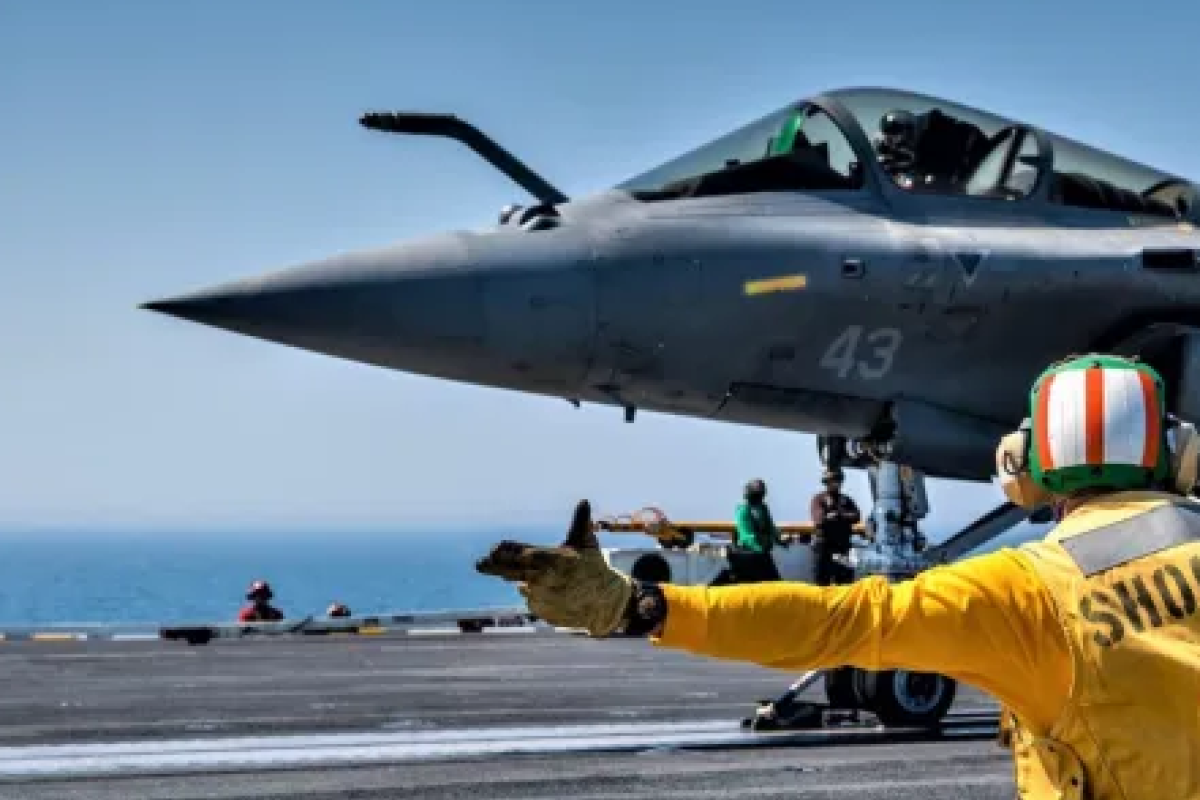India Bolsters Naval Power with Rafale-M Deal, Shifts Focus to Indigenous Fighter Programs

Jet--
In a significant move to modernize its defense capabilities, India’s Cabinet Committee on Security (CCS), chaired by Prime Minister Narendra Modi, approved a landmark ₹63,000-crore (approximately $7.5 billion) deal on April 9 to procure 26 Rafale-M fighter jets from France for the Indian Navy. This acquisition, set to be finalized by the end of April 2024, marks a critical step in enhancing India’s maritime prowess while spotlighting the need to accelerate indigenous projects like the Tejas LCA Mk1A and the futuristic Advanced Medium Combat Aircraft (AMCA) to address the Indian Air Force’s (IAF) squadron shortages.
Rafale-M Deal: Key Highlights
The agreement includes:
- 22 single-seater Rafale-M jets: Designed to operate from aircraft carriers like INS Vikrant and INS Vikramaditya.
- 4 twin-seater trainer variants: Though not carrier-compatible, these will bolster pilot training.
- Weapons, simulators, spares, and logistics support: Ensuring operational readiness for the Navy.
Notably, the deal incorporates India-specific enhancements, such as:
- A dedicated Maintenance, Repair, and Overhaul (MRO) hub in India to reduce dependency on foreign support.
- Integration of India’s domestically developed Astra Beyond Visual Range (BVR) air-to-air missiles.
- Sourcing components from local suppliers under the ‘Make in India’ initiative.
Deliveries are slated to begin 3.5 years post-contract signing, with the entire fleet expected to join the Navy by 2031.
Strategic Implications for the Navy and Beyond
The Rafale-M acquisition addresses the Indian Navy’s urgent need for carrier-based fighters, ensuring dominance in the Indo-Pacific region. However, the deal also underscores a broader narrative: India’s defense strategy is increasingly balancing foreign imports with indigenous innovation.
While the Navy secures its Rafale-Ms, the IAF continues to push for 114 additional Rafale jets to replenish its depleting squadrons, which currently stand at 31 against a sanctioned strength of 42. Yet, experts argue that overreliance on foreign platforms is unsustainable.
The Indigenous Imperative: LCA Mk1A and AMCA
To achieve self-reliance, India is doubling down on homegrown projects:
- Tejas LCA Mk1A:
- The IAF has ordered 83 Mk1A variants, with deliveries beginning in 2024.
- An upgraded Mk1A features advanced radar, electronic warfare systems, and compatibility with diverse weapons.
- Speeding up production at Hindustan Aeronautics Limited (HAL) is critical to meet deadlines.
- AMCA (5th-Gen Stealth Fighter):
- India’s ambitious stealth fighter program aims for its first flight by 2025 and induction by 2030.
- Success hinges on mastering cutting-edge technologies like stealth, sensor fusion, and next-gen engines.
Squadron Strength: A Race Against Time
The IAF’s squadron numbers have dwindled due to retiring Soviet-era MiGs and Jaguars. While the Rafale-M deal focuses on the Navy, the Air Force’s requirement for 114 Rafales remains pending. However, prioritizing indigenous platforms like the LCA Mk1A and AMCA could offer long-term solutions:
- LCA Mk1A: A cost-effective, agile fighter to replace aging fleets.
- AMCA: A game-changer for air superiority and strike missions.
Challenges Ahead
- Timely Delivery: Delays in Rafale-M deliveries or Tejas production could widen capability gaps.
- Technological Hurdles: The AMCA requires breakthroughs in engine development and stealth materials.
- Budget Constraints: Balancing high-cost imports (like Rafale) with domestic R&D funding is vital.
Conclusion: A Dual-Track Approach for National Security
The Rafale-M deal strengthens India’s naval capabilities, but the real test lies in fast-tracking the LCA Mk1A and AMCA programs. For the IAF to meet its squadron targets, a dual strategy—importing cutting-edge tech while investing in homegrown solutions—is non-negotiable. As India navigates regional security challenges, achieving self-reliance in defense manufacturing will define its strategic autonomy in the decades ahead.
